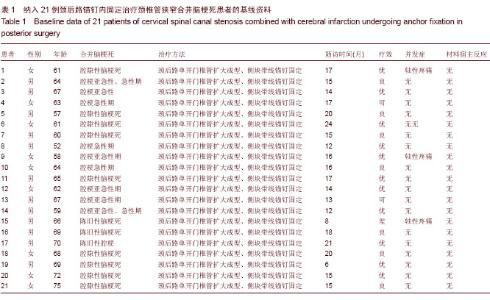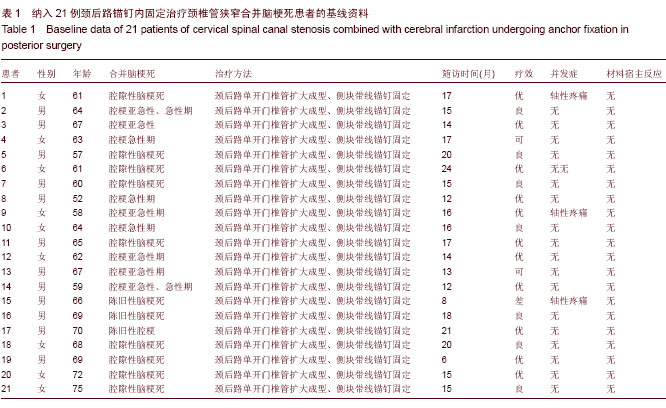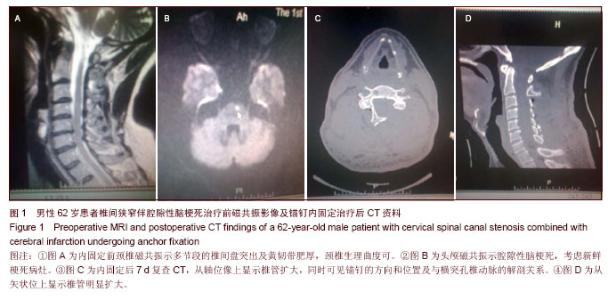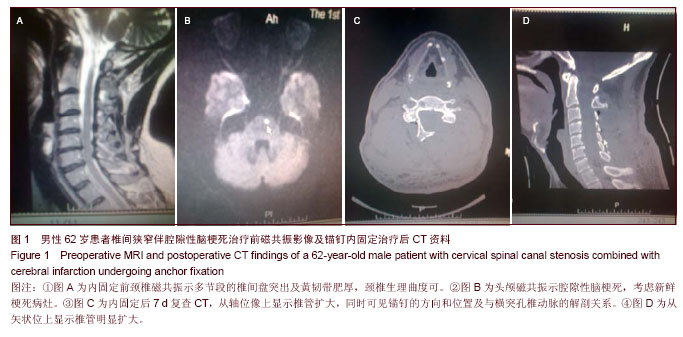| [1] 胥少汀,葛宝丰,徐印坎.实用骨科学[M].4 版.北京:人民军医出版社,2012:1990-1993.[2] Satomi K, Ogawa J, Ishii Y, et al. Short-term complications and long-term results of expansive open-door laminoplasty for cervical stenotic myelopathy. Spine J. 2001;1(1):26-30.[3] Yalamanchili PK, Vives MJ, Chaudhary SB. Cervical spondylotic myelopathy: factors in choosing the surgical approach. Adv Orthop. 2012;2012:783762.[4] 茅剑平,田伟,刘波,等.保留C2和C7棘突肌肉止点的改良颈椎后路椎管扩大成型术的疗效分析[J].中华医学杂志,2010,90(5): 337-341.[5] 李玉伟,王海蛟,严晓云,等.改良颈椎管扩大成型术治疗脊髓型颈椎病的远期疗效分析[J].中国脊柱脊髓杂志,2003,13(10): 615-616.[6] Li J, Zheng Q, Guo X, et al. Anterior surgical options for the treatment of cervical spondylotic myelopathy in a long-term follow-up study. Arch Orthop Trauma Surg. 2013;133(6): 745-751. [7] Shamji MF, Massicotte EM, Traynelis VC,et al. Comparison of anterior surgical options for the treatment of multilevel cervical spondylotic myelopathy: a systematic review. Spine (Phila Pa 1976). 2013;38(22 Suppl 1):S195-209. [8] Choi JW, Lee JK, Moon KS, et al. dovascular embolization of iatrogenic vertebral artery injury during anterior cervical spine surgery: report of two cases and review of the literature. Spine (Phila Pa 1976). 2006;31(23):E891-894. [9] Hong JT, Park DK, Lee MJ, et al. Anatomical variations of the vertebral artery segment in the lower cervical spine: analysis by three-dimensional computed tomography angiography. Spine (Phila Pa 1976). 2008;33(22):2422-2426.[10] 田长庆,李振宇,顾洪生,等.高龄颈椎管狭窄症手术治疗的临床研究[J].中同临床解剖学杂志,2008,26(5):571-573.[11] 陈德玉,卢旭华,陈宇,等. 颈椎病合并颈椎后纵韧带骨化症的前路手术治疗[J].中华外科杂志,2009,47(8):610-612. [12] Kihara S, Umebayashi T, Hoshimaru M. Technical improvements and results of open-door expansive laminoplasty with hydroxyapatite implants for cervical myelopathy. Neurosurgery. 2005;57(4 Suppl):348-356.[13] Matsunaga S, Kukita M, Hayashi K, et al. Pathogenesis of myelopathy in patients with ossification of the posterior longitudinal ligament. J Neuro surg. 2002;96(2 Suppl): 168-172.[14] Geck MJ, Eismont FJ. Surgical options for the treatment of cervical spondylotic myelopathy. Orthop Clin North Am. 2002; 33(2):329-348.[15] Otani K, Sato K, Yabuki S, et al. A segmental partial laminectomy for cervical spondylotic myelopathy: anatomical basis and clinical outcome in comparison with expansive open-door laminoplasty. ine (Phila Pa 1976). 2009;34(3): 268-273.[16] Iwasaki M, Kawaguchi Y, Kimura T, et al. Long-term results of expansive laminoplasty for ossification of the posterior longitudinal ligament of the cervical spine: more than 10 years follow up. J Neurosurg. 2002;96(2 Suppl):180-189.[17] 方大标,张摇平,孙洪体,等. 颈后路单开门椎管扩大成形术治疗多节段脊髓型颈椎病[J].临床军医杂志,2010,38(4):519-521.[18] 徐公平,张志鹏,庄金鹏.颈椎前路手术后早期合并脑梗塞的回顾性研究[C]. COA大会论文汇编,2012.[19] 刘新宇,原所茂,田永吴,等 棘突劈开、单侧进入双侧减压与椎板切除减压治疗退变性腰椎管狭窄症的比较[J].中华骨科杂志, 2013,33(10):984-989.[20] Hosono N, Sakaura H, Mukai Y,et al. C3-6 laminoplasty takes over C3-7 laminoplasty with significantly lower incidence of axial neck pain. Eur Spine J. 2006;15(9):1375-1379.[21] Smith MD, Emery SE, Dudley A, et al. Vertebral artery injury during anterior decompression of the cervical spine. A retrospective review of ten patients. J Bone Joint Surg Br. 1993; 75(3):410-415.[22] Peng CW, Chou BT, Bendo JA, et al. Vertebral artery injury in cervical spine surgery: anatomical considerations, management, and preventive measures. Spine J. 2009;9(1): 70-76.[23] Burke JP, Gerszten PC, Welch WC. Iatrogenic vertebral artery injury during anterior cervical spine surgery. Spine J. 2005; 5(5):508-514.[24] 进伟,陈长青,郭俊红,等.侧块螺钉悬吊单开门颈椎管成形术18例分析[J].中国误诊学杂志,2007,7(11):2633-2634.[25] 秦超,廖全明.带线锚钉系统在颈椎单开门椎管成形术中的应用[J]临床外科杂志 2013;21(2):149-150.[26] 方大标,张平,孙洪体,等.颈后路单开门椎管扩大成形术治疗多节段脊髓型颈椎病[J].临床军医杂志, 2010,38(4):519-521.[27] 林久灶,林泉,崔为良,等.带线锚钉在颈椎单开门椎管扩大椎板成形术中的应用[J].中国骨与关节损伤杂志,2013,28(1):43-44.[28] 周志刚,马衣努尔•买提托合提,王世宣,等.腔隙性脑梗死患者妇科手术的围术期处理[J].华中医学杂志,2009,33(5):232-236.[29] Borghi C, Dormi A, Veronesi M, et al. Association between different lipid-lowering treatment strategies and blood pressure control in the Brisighella Heart Study. Am Heart J. 2004;148(2):285-292.[30] Moussouttas M, Boland T, Chang L, et al. Prevalence, timing, risk factors, and mechanisms of anterior cerebral artery infarctions following subarachnoid hemorrhage. J Neurol. 2013;260(1):21-29.[31] 秦艳芬,连亚军,郑亚珂,等.围手术期脑梗死10例临床分析[J].郑州大学学报医学版,2009,44(4):916-918.[32] 张峰,钱菊英.合并心血管疾病老年病人围手术期处理[J].中国实用外科杂志,2009,29(2):112-115. |



